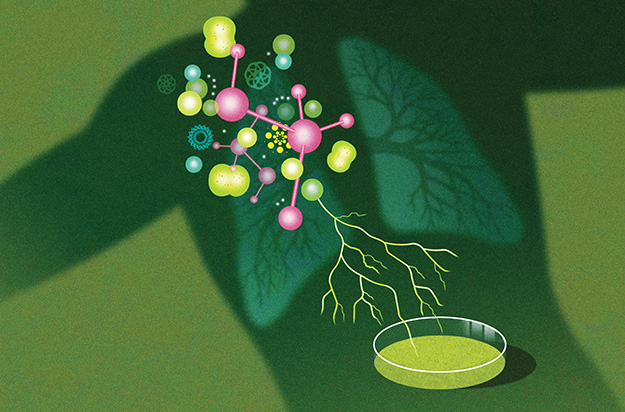Fall 2017: Building Livability
UTA researchers are creating a more sustainable, affordable North Texas for the future.
Skip to content. Skip to main navigation.
UTA researchers are creating a more sustainable, affordable North Texas for the future.
From carbon dioxide conversion to landfill mining, researchers at UTA are seeking viable alternative energy options.
Found in everything from space shuttles to dental fillings, composite materials have thoroughly infiltrated modern society. But their potential is still greatly untapped, offering researchers ample opportunity for discovery.
Within the particle showers created at the Large Hadron Collider, answers to some of the universe’s mysteries are waiting.
Model systems like pigeons can help illuminate our own evolutionary and genomic history.
UT Arlington's tiny windmills are bringing renewable energy to a whole new scale.
The stability of our highways, pipelines, and even manholes is reaching a breaking point.
Scientists believe they have discovered a subatomic particle that is crucial to understanding the universe.
UT Arlington researchers unlock clues to the human body’s most mysterious and complex organ.
UT Arlington researchers probe the hidden world of microbes in search of renewable energy sources.
Wounded soldiers are benefiting from Robert Gatchel’s program that combines physical rehabilitation with treatment for post-traumatic stress disorder.
Tiny sensors implanted in the body show promise in combating acid reflux disease, pain and other health problems.
Nanotechnology researchers pursue hybrid silicon chips with life-saving potential.
Biomedical engineers combat diseases with procedures that are painless to patients.

Two UTA professors have established a link between hypoxia and HOTAIR, a noncoding ribonucleic acid (RNA) implicated in several types of cancer.
Marco Brotto, the George W. and Hazel M. Jay Endowed Professor of Nursing, and Subhrangsu Mandal, associate professor of chemistry, published a study in the journal Gene arguing that hypoxia helps aid the growth of cancer cells in people with the HOTAIR gene. Noncoding RNA like HOTAIR is a newly discovered class of molecules that is emerging as a master regulator or facilitator of cancer. Hypoxia is a medical condition that reduces the flow of oxygen to tissues. Among other things, oxygen provides nutrition to brain, cardiac, and muscle cells and burns fat. Chronic obstructive pulmonary disease and aging, along with outside factors like pollution and climate change, are among the biggest causes of hypoxia.
"This could have very important implications," says Dr. Brotto. "We know that with aging, humans have higher probability of cancer, but they also have more hypoxia because of reduced respiratory capacity."
He and Dr. Mandal have spent more than a decade researching hypoxia and HOTAIR. Their Gene study—which was co-written with former adjunct faculty Khairul Ansari and chemistry graduate students Arunoday Bhan, Paromita Deb, and Nadine Shihabeddin—was conducted over two years, with the professors performing systematic experiments on different cells in their labs.
Anne Bavier, dean of the College of Nursing and Health Innovation, praises their work.
"For more than a century, scientists have been taking a sledgehammer at cancer," she says. "Yes, we still have a long way to go, but we have also come a long way. This most recent work by Brotto, Mandal, and their fellow researchers strikes another important blow against this disease."
Brotto says this study offers hope for the development of a drug to inhibit the development of cancer by targeting HOTAIR.
"In the meantime, we all can do things to stave off hypoxia, such as regular exercise, good nutrition, and improving our climate conditions."
Illustration by Stuart Briers